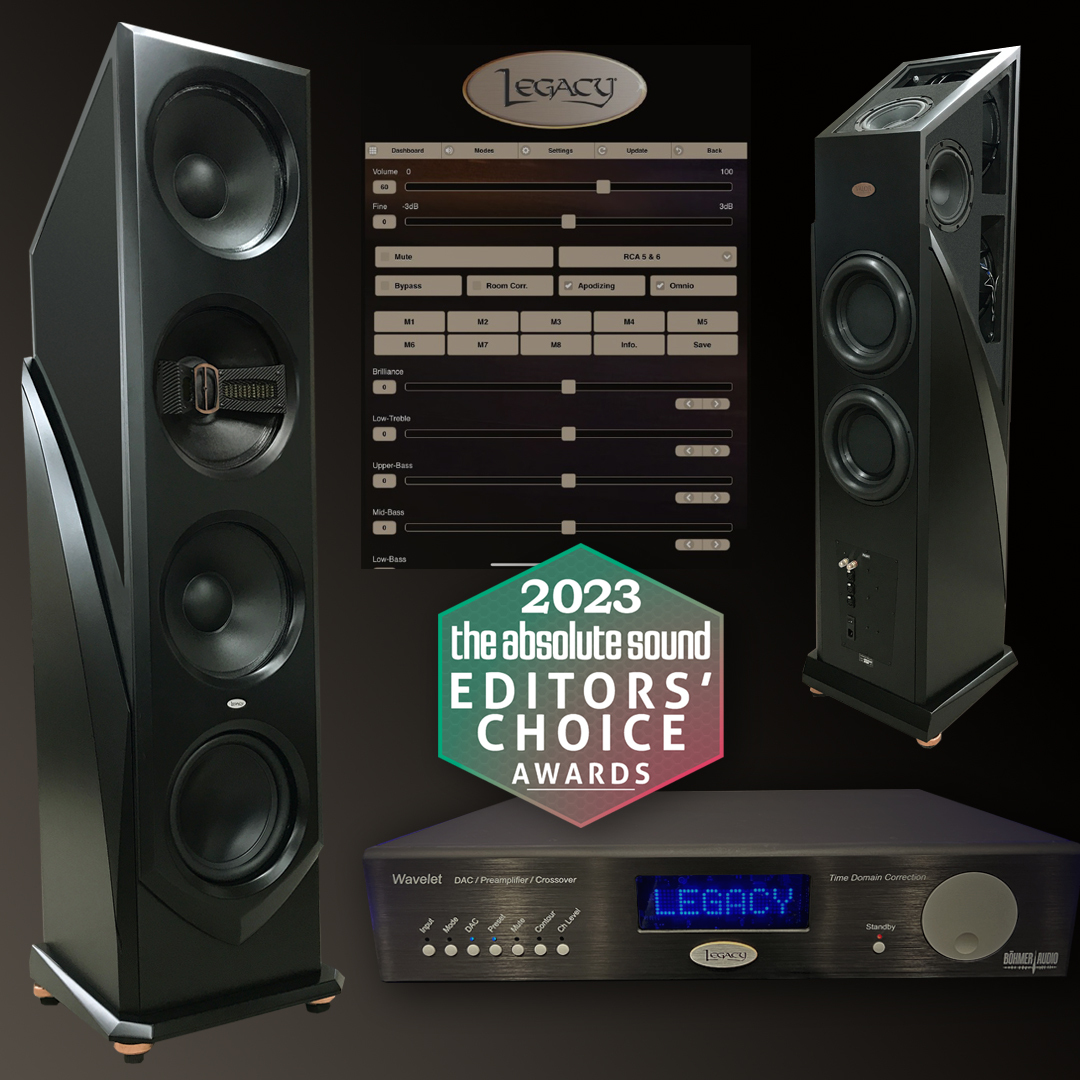-
LEGACY AUDIO REVIEWS
Legacy Wavelet II “At a Frontier of Sound…
July 2023
Publication: Classical Candor
Reviewer: Bill Heck
Product: Wavelet 2 DAC / Preamp / Processor
“I appreciate subtle improvements as much as the next music lover. But if I’m spending big bucks upgrading audio components, I don’t want subtle. I want something that no one could possibly miss even once. If we spend serious money, shouldn't we get serious returns? Not on the edges, not tiny changes, but major upgrades, differences obvious to the most casual listener.”

“The Wavelet II is an extraordinary product with powerful sonic capabilities… there’s no doubt that we are operating here at a frontier of sound reproduction.”
"The Wavelet II is one of a very few components that does not just sneak across the DSP frontier but bounds fearlessly past it."
"For those deep in the weeds on crossovers, note that Wavelet II digital crossover is itself quite sophisticated, supporting multiple parameters (slopes, delays, filters, etc.) per channel."
"The Böhmer approach in the Wavelet II differs from most, perhaps all, other room correction systems in that it is primarily based on time rather than frequency, compensating for room effects within a 50 millisecond (ms) window. That long window allows the Böhmer analysis to “look at” and deal with the results of multiple room reflections."
"Existing Wavelet II’s can be upgraded with this latest firmware; in other words, the functionality of the Wavelet II can improve after you buy it. We’re used to that with smartphones (and electric vehicles); how nice to see it in an audio product."
“To my ears, the Böhmer correction just sounds more “right”, more “natural.”
"I was able to compare the effects of (other room correction systems) and Böhmer systems within fairly short time periods with both sets of speakers. To my ears, the Wavelet II’s Böhmer room correction was smoother and more effective, with fewer compromises." While other room correction companies “tightened bass but at the expense of lowering the perceived bass level, Böhmer manages the tightening part without the perceived reduction part. The Böhmer correction is constant throughout the room."

"Meanwhile, the Böhmer correction is far easier to set up. Typically, room correction systems require multiple closely spaced microphone measurements in a listening “window”; the Böhmer approach uses one measurement per side with the microphone at about tweeter height 48” in front of the speaker. I can run the Böhmer in under 10 minutes…"
In Act 1, No. 7: The Nutcracker Battles the Army of the Mouse King, Gergiev / Mariinsky Orchestra: “…with room correction on, the initial pop, meaning the leading edge of that shot, is more startling, distinct, realistic, and exciting. (Seriously. I jumped.) Similarly, at the very end of the movement, the repeated plucked double notes on the basses are deeper and more resonant. In general, turning on room correction clarifies the various instruments.”
In Waltz of the Flowers, Los Angeles Guitar Quartet: “The contribution of room correction was particularly noticeable with this recording. The guitars not only have more body, but it also is easier to tell that there really are several different instruments playing different parts. With room correction off, you still hear all the notes, but it’s not so clear where each line is coming from. Metaphorically, with room correction off, we have a caricature of some guitars; with room correction on, four people are playing individual guitars.”
“Without correction, the sound is noticeably two-dimensional on a plane in front of the speakers. Turning on room correction opens it up, adds a little punch, and just helps things fly along.”
Wavelet II features the aforementioned “Omnio”. “Subjectively, the effect is obvious, and here’s my best effort at description: Imaging is “solidified”, made more three-dimensional and precise, with instrumental and vocal positions clarified. The image also is deepened front to back, while the overall sound fills out, with instruments and voices having more tonal depth or body. For example, in orchestral music the brasses and woodwinds are more clearly behind the strings, and the sound of the orchestra is “thicker” (in a good sense), as though more of the full sound of each instrument comes through. An abbreviated way to say all this is that the sonic “picture” of performers in space became significantly more believable, which is not the sort of thing that one normally hears by simply flipping a switch.”
"I said earlier that Omnio/Omnio+ make an immediately noticeable change, i.e., one that is not subtle. This is just the sort of improvement that you can obtain only with advanced DSP, and as such, it is a big deal. It’s why one would be interested in a unit such as the Wavelet II – and it may be a harbinger of even bigger changes to come."

"The Wavelet II also is a real world product. A simple, intuitive user interface combines serious processing power and control flexibility to work with real systems in real rooms. Sure, it’s nice that the Wavelet II is suitable for use with superspeakers in purpose-built audio rooms that already are full of treatments and tuned to perfection, but it’s really exciting that it works even for lesser speakers in plain old real rooms in real houses, condos, or apartments."
"I would speculate that, in many (most?) systems, investing in a Wavelet II could make a bigger difference than an equivalent investment in new speakers. Here’s the point: at the least, you really should try to hear a Wavelet II in a system fully set up to use it. DSP truly is the final frontier of audio; the effects are immediate and obvious."
Related Products:

-
 Masters Collection
Masters CollectionWavelet 2 DAC / Preamp / Processor
The Legacy Audio Wavelet 2 is a control preamp, a high-end DAC, a 2/3/4-way digital crossover with time alignment and a speaker correction system that will literally “learn” your room.
Learn More

